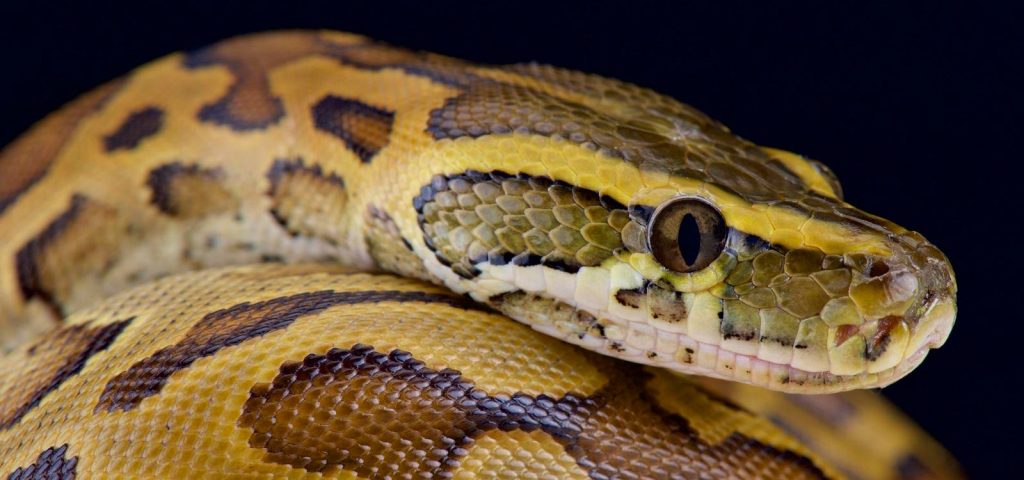The risk of a snake targeting a human (as food) is almost non-existent. Even the largest snakes, like pythons and anacondas, primarily feed on rodents, birds and other small to medium-sized mammals. However, in certain scenarios, they do prey on people—behavior that occurs when the snake mistakes a person for its usual prey or finds itself in unusual circumstances where food is scarce.
Here are two snake species with confirmed cases of man-eating behavior. While these instances are rare and often result from human encroachment on natural habitats, they serve as a sobering reminder of how fearsome these predators can be.
1. The Reticulated Python (Malayopython reticulatus)
One of the most infamous and well-documented cases of a man-eating snake occurred in Indonesia in June 2024, when a woman was found inside a reticulated python measuring 16 feet long. The victim, a mother of four, had been reported missing, and her body was recovered after cutting the snake open.
It was the fifth such incident of a python devouring a human in the country since 2017, with this most recent occurrence unfolding in Kalempang village in the South Sulawesi province. In 2023, residents in South Sulwesi’s Tinanggea district had to kill an eight-meter (26 feet) python that was found strangling and eating one of the farmers in the village.
The reticulated python is the world’s longest snake, with individuals recorded reaching over 30 feet in length. Native to Southeast Asia, they thrive in tropical forests, grasslands and mangrove swamps, often close to or in direct contact with human settlements.
Known for their beautifully patterned scales and incredible constriction power, they primarily hunt birds, small mammals and other reptiles. However, horrific cases like the ones detailed above do occur and speak to the risk posed by this enormous species in regions where our interactions with them are becoming increasingly unavoidable.
Research into the feeding behavior of reticulated pythons has revealed that they can consume meals weighing up to half of their body weight. A June 2005 article in The Raffles Bulletin of Zoology documented cases of these pythons attacking and eating Malayan sun bears, underscoring their capacity to prey on large animals.
Their flexible jaws and ability to stretch their stomachs and intestines allow them to swallow large animals, and occasionally, humans.
2. The African Rock Python (Python sebae and Python natalensis)
In 2002, headlines were made when a 10-year-old boy in Durban, South Africa was killed and swallowed by an African rock python. It was the first recorded “man-eating” incident for this species.
Other children who were with the victim witnessed the horrifying scene unfold from mango trees where they were hiding, as the snake trapped the boy, squeezed the life out of him and swallowed him whole.
Herpetologists suspect that the python had just woken up from its winter hibernation and was searching for prey when the victim, unfortunately, wandered into its path.
Another grim incident took place in Campbellton, New Brunswick, Canada, in 2013 when two young boys aged 4 and 6 were killed by an African rock python while they were sleeping in an apartment above their father’s pet store.
The African rock python, native to sub-Saharan Africa, can grow over 20 feet in length, according to a 2009 U.S. Geological Survey report. Its top and bottom jaws are attached with stretchy ligaments, which allows it to swallow animals wider than itself. In the wild, it has been documented preying on animals as large as antelope and crocodiles.
Much like their Southeast Asian relatives, they kill via constriction, suffocating the animal before ingesting it. It is assumed that these pythons, like other large constrictors, do not differentiate between prey types once a target has been subdued, leading to such rare attacks on humans.
It’s Not Just The Snakes To Blame
While tales of man-eating snakes are often exaggerated in popular media, there have been verified reports of constrictors like the reticulated python and African rock python preying on humans.
These rare events occur due to a combination of human encroachment, habitat loss and the opportunistic feeding behavior of these powerful snakes. In almost all cases, these serpents do not actively seek out humans but come into conflict with them because of proximity and circumstance.
Far from being villains, snakes play an important part in maintaining the balance of the ecosystem. How do you feel about your role in maintaining this balance? Take this test to find out: Connectedness To Nature Scale
Read the full article here






